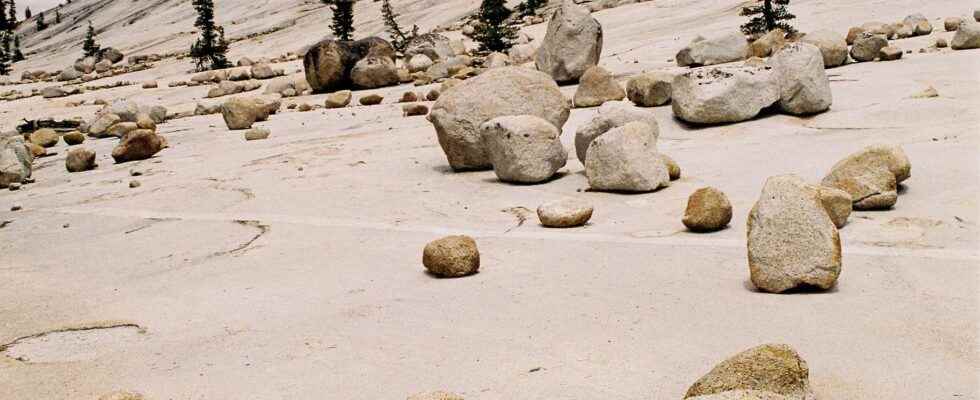An erratic boulder represents a boulder of various sizes and types, isolated and with no apparent link with its geological environment. They can be found in the middle of the plains as well as at the top of the hills. The name “erratic” comes from the idea that they represent “lost” blocks. Their origin intrigued the first geologists of the XVIIIe century who did not understand what process could have moved rocks weighing several tons, often over several hundred kilometers.
Rocks transported by glaciers
Several more or less far-fetched hypotheses then emerge to explain the displacement of these rocky blocks: deluge, phenomenal floods, melting brutal glaciers, underground explosions and other various cataclysms.
The real explanation is found in 1795 by James Hutton, who incriminates the displacement of the erratic blocks in movements glaciers. It is actually moraines, although this term is generally reserved for rock features of a smaller size.
When a glacier flows, it carries with it a number of boulders of varying size, which it will have previously torn from the mountain slopes. Housed within the moving ice, boulders can travel thousands of kilometers. Then, when the ice melts and the glacier retreats, the erratic block is deposited on the ground. It will not move afterwards, unless a new glacier wins it again.
We find erratic blocks generally below the old glacial tongues. However, since glaciers have the ability to move against the slope, it happens that erratic blocks are found at an altitude higher than that of their place of origin. This is the case of the erratic boulders of the Alleghany Plateau in the United States, which are located 500 meters above the tear-off site and at a distance of 160 km.
Erratic boulders characteristic of ancient glacial regions
These erratic blocks are thus observed wherever there were ancient glaciers. We thus find in the Alps naturally, but also in Germany, London, the United States, Canada … The “Gros Caillou” on the Croix-Rousse hill in Lyon is an erratic boulder.
Erratic boulders can also end up on the ocean floor, either because the sea invaded a former glacial area or because a boulder got trapped in an iceberg which will subsequently melt in the open sea.
The analysis of these blocks is essential to understand the different stages of glaciations and makes it possible in particular to reconstitute the paleoenvironments of the Quaternary.
You will also be interested
[EN VIDÉO] Extreme planet: the mountain viscache and its amazing dance In this new excerpt from the film Peru, Planète Extrême produced by French Connection Films, the team sets out to meet the viscache, a surprising rodent living in altitude. Here it is in video evolving in its natural environment.
Interested in what you just read?
.
fs12
